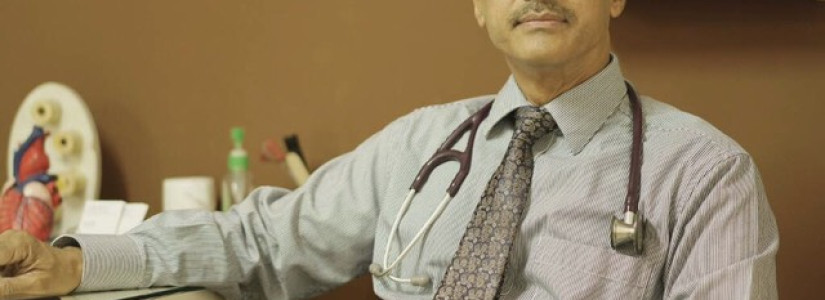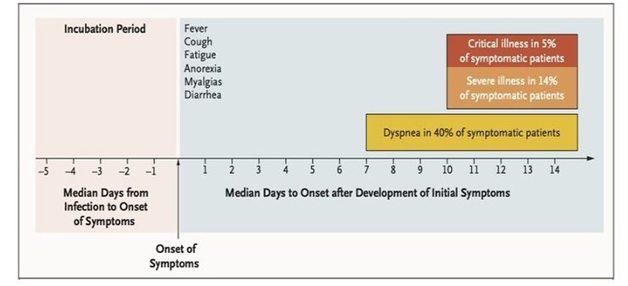CT- scan and MRI centers in Kathmandu
6 November, 2020CT- scan and MRI centers in Kathmandu...
Read More
COVID has made our life damn difficult and miserable. But this too shall pass away, We just need to have patience and persevere on healthy ways of life. I face many question on COVID these days “Does steam inhalation and warm saline gargles help in COVID-19 ?” This is one of their favorite question These days patient ask me more question about COVID rather than heart problems which is not surprising.
Before answering let me discuss some of the recent findings on the COVID for our comprehensive coverage
Depends on several aspects like
COVID-19 can be divided into three phases that correspond to different clinical stages of the disease.
Stage 1: Asymptomatic state (initial 1–5 days of infection) The inhaled COVID virus binds to epithelial cells in the nasal cavity and starts replicating. For a few days there is a logarithmic expansion of viral load and local propagation of the virus which evokes a limited innate immune response.
Stage 2: Upper respiratory tract and conducting airway disease (day 3-12) - During the next few days the virus multiplies, propagates and migrates down the respiratory tract along the conducting airways, and now a more robust innate immune response is triggered in nearly 85% of the infected patients, the disease will be mild and mostly restricted to the upper and conducting airways.
Stage 3: Serious Disease Stage Hypoxia, ground glass infiltrates in lungs, and progression to ARDS. Unfortunately, nearly 15% of the cases may progress to stage 3 disease and will develop pulmonary infiltrates; some may develop very severe disease with fatality 1-5%.COVID timelines It takes about 5 days from exposure to onset of disease (fever, cough, myalgia, etc) which persists for about 7 days when serious symptoms like dyspnea start emerging. At this point, the chain of viral transmission may be prevented and viral load decreased by working on these modes of transmission.
COVID infection and Elderly individuals are particularly at risk because of their diminished immune response and reduced ability to repair the damaged epithelium. The elderly also have reduced muco-ciliary clearance, permitting easy access of virus to alveoli.
Social Distancing: Social distancing is a non-pharmaceutical infection prevention measure implemented to avoid/decrease contact between those to stop or slow down the rate and extent of disease transmission in a community. This eventually leads to a decrease in spread, morbidity, and mortality due to the disease. At an individual level, it involves -Staying at home as much as possible; avoiding crowded places; restaurants, malls etc. Maintaining hygiene and physical distancing of ideally 2 meter (6 feet) at public places Doing away with shaking hands and hugging Avoiding contact with sick people Avoiding traveling to places
General hygiene measures: General measures of hygiene for prevention of viral respiratory infections include following: Hand hygiene: Hand washing with soap and water for at least 20 seconds. An alcohol-based hand sanitizer may be used and hands rubbed for 20 seconds, if soap and water are unavailable. Individuals should avoid touching their eyes, nose, and mouth with unwashed hands. Respiratory hygiene: Coughs and sneezes should be covered with a tissue, followed by disposal of the tissue in the trash. In the absence of tissue/handkerchief, the patient should be instructed to cover their nose and mouth with their arms, with elbows flexed during coughing/sneezing. Spitting should be avoided. Environmental hygiene: Individuals should avoid close contact with sick people. Sick people should stay at home. Frequently touched objects and surfaces should be cleaned and disinfected regularly. Disinfectants should be used on objects like phones, computers, and doorknobs. Soap and water should be used for objects that are used for cooking or eating- like utensils and dishwar.

Wearing gloves: When visiting public places like local grocery shops or pharmacy, wearing gloves may seem a sensible precaution. They prevent fomite transmission from any contaminated surfaces like utensil clothes furniture to naked hands. However, gloves give a false sense of security especially if individuals touch other parts of the body with a contaminated gloves, like face and mouth. But the hand hygiene is more important than wearing gloves.
Steam inhalation: SARS COV-2 is a crown-shaped single-strand RNA with a lipid coat. Having a lipid coat, it is heat sensitive and rapidly loses viability/infectivity at 56°C in 15 minutes (10000 units per 15 minutes) and then rapidly losing thereafter becoming completely non-viable at 70°C. Likewise, higher relative humidity also makes it non-infective. It is also inactivated by ultraviolet light, alkaline ph >12, or acidic ph <3conditions. Thus, steam inhalation seems a logical solution to COVID infection. As per timelines mentioned above, coronavirus remains and proliferates in the nasopharynx and upper respiratory tract for up to two weeks after exposure. Therefore, steam inhalation may be especially useful in stage1 and early stage 2 of the disease, as high concentration of virus is seen in the oropharynx in asymptomatic stage during early disease states. It might be of only a limited value in advanced disease infecting the lower respiratory tract. Heated and humidified air has long been used by people with the common cold. It is included as a recommendation in guidelines by European & US medical practitioner societies. The theoretical basis for this recommendation is that steam may help decongested inflamed mucus membrane of the upper respiratory tract better, and may even destroy the virus as it does in vitro. Earlier, some trials have reported benefits of heated, humidified air for symptom relief in people with the common cold. We also know that the enveloped viruses have definite heat sensitivity, and thus coronavirus which is a lipid-enveloped virus is likely to be more heat-sensitive than other viruses. Thus, on the balance of logic and evidence and in view of very low side-effects of steam inhalation , it should do the good work. It is generally recommended twice a day.
Warm saline gargles: Although the Infection control agencies do not approve saline gargle as an effective mean for prevention of COVID, German scientist claims as per their study in Berlin that the novel corona virus can be inactivated using commercially available mouth washes and warm saline gargle. Warm Saline gargles is a way of nasopharyngeal wash to prevent the virus from inhabiting thus replicating in the nasal and pharyngeal mucosa. It may also act by viral shedding thus reducing viral transmission in cases of viral acute respiratory tract infections. Gargling with a mouthwash cannot inhibit the production of viruses but the cells could reduce the viral load in the oral cavity and the throat. Thus frequent saline gargles with warm hypertonic saline (three teaspoons in ½ liter of water or gargling with mouthwashes may help in maintaining naso-pharyngeal hygiene.
While social isolation,maintaining hygiene and wearing face masks are of definite help, some other strategies like steam inhalation and gargles with warm saline and mouthwashes may also help; there does not appear to have any significant downsides. Face shield is of value in the environment where people are likely to cough or sneeze on your face. Supplemental medicines like vitamin C multi-vitamins are helpful. Consumption of high proteins are necessary. Use of ayurvedic medicines like tinospora (giloy), tulsi ocimum are found to have immunostimulatory effect and use of turmeric ginger and garlic is also reasonable. Avoiding sugar and fast foods are important. Half an hour of exercise daily will keep you fit to fight the disease. Finally stay home stay safe and keep others safe.
Leave a comment